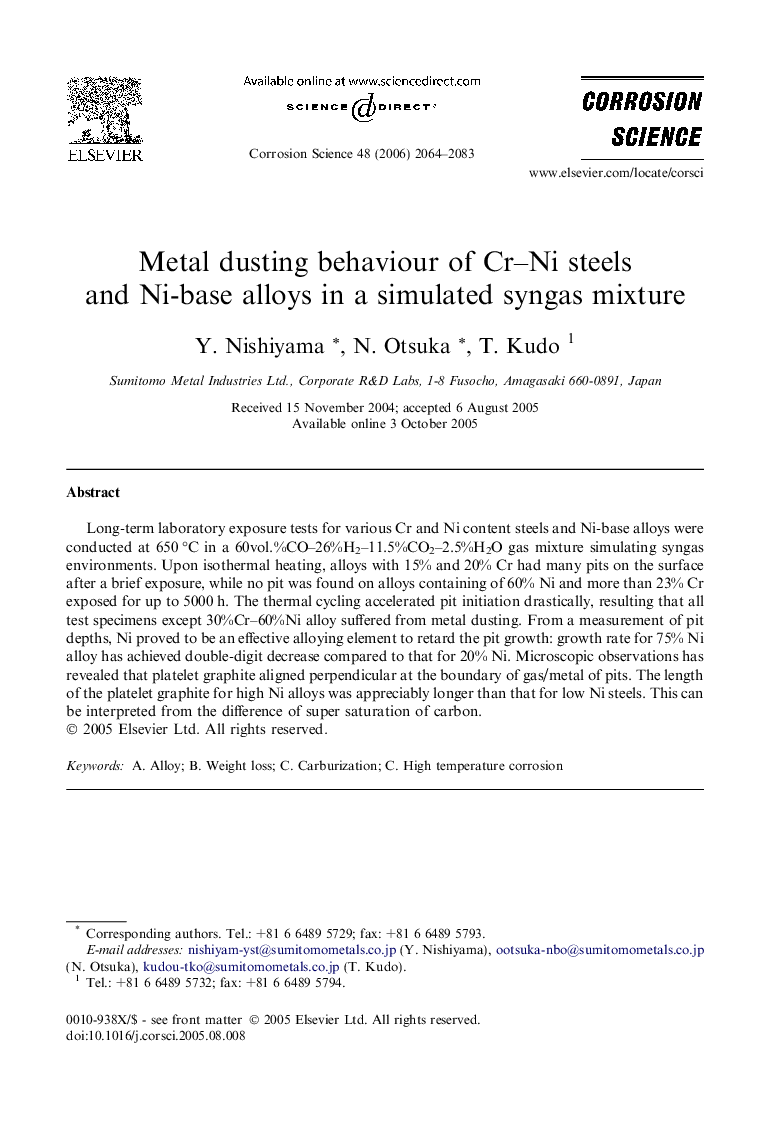| Article ID | Journal | Published Year | Pages | File Type |
|---|---|---|---|---|
| 1471693 | Corrosion Science | 2006 | 20 Pages |
Long-term laboratory exposure tests for various Cr and Ni content steels and Ni-base alloys were conducted at 650 °C in a 60vol.%CO–26%H2–11.5%CO2–2.5%H2O gas mixture simulating syngas environments. Upon isothermal heating, alloys with 15% and 20% Cr had many pits on the surface after a brief exposure, while no pit was found on alloys containing of 60% Ni and more than 23% Cr exposed for up to 5000 h. The thermal cycling accelerated pit initiation drastically, resulting that all test specimens except 30%Cr–60%Ni alloy suffered from metal dusting. From a measurement of pit depths, Ni proved to be an effective alloying element to retard the pit growth: growth rate for 75% Ni alloy has achieved double-digit decrease compared to that for 20% Ni. Microscopic observations has revealed that platelet graphite aligned perpendicular at the boundary of gas/metal of pits. The length of the platelet graphite for high Ni alloys was appreciably longer than that for low Ni steels. This can be interpreted from the difference of super saturation of carbon.
